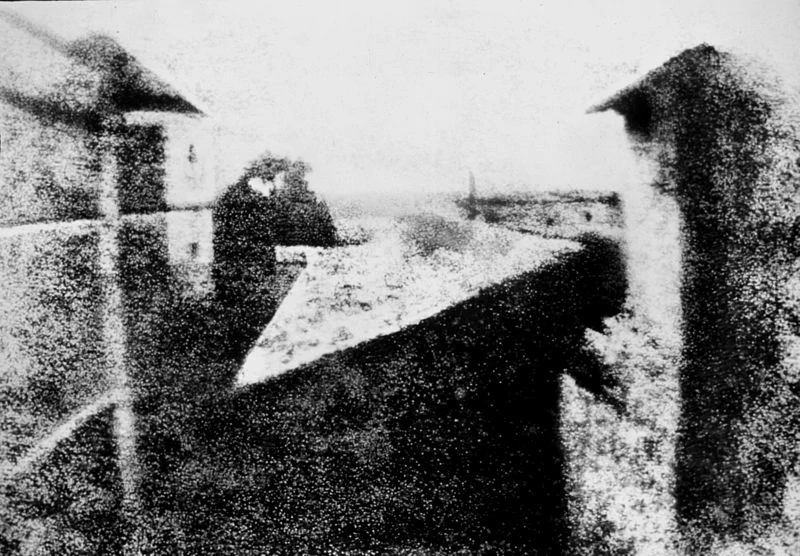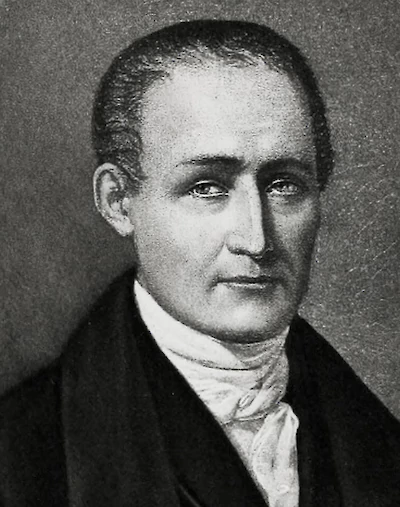

Nicéphore Niépce
The inventor of Photography
1765 – 1833Description of a few results obtained spontaneously by the action of Light.
The examples that I have the honor of presenting are the first results of my extensive research on the manner of fixing the image of objects by the action of light, and of reproducing them by printing, with the aid of the known processes of engraving.
I was involved in this research, when a circumstance quite recently precipitated my departure for England, which prevented my continuing them and arriving at more satisfactory results. I therefore desire, that these first trials may be judged less for their connection with the arts, than for the presumed methods employed for producing the effect itself, because it is upon the effectiveness of these methods that a complete success depends. At the same time, I also venture to ask indulgence for my work, which you will be more disposed to grant me perhaps, if you consider it as the first uncertain step in a completely new direction.
It will be found, undoubtedly, that my framed drawings, made on pewter plates are too weak in tone. This defect arises principally from the light not contrasting sufficiently with the shadows, owing to the metallic reflection. It would be easy to remedy this by giving more whiteness and brightness to the parts representing the effects of light, and by getting the impressions of this fluid upon the silver plate, well polished and burnished; for then the contrast between the white and black would be so much more marked, and the latter color, rendered more intense by means of some chemical agent, would lose that brilliant reflection which hampers vision, and produces a kind of incongruous effect.
My attempts at engraving leave much to be desired as to the purity of line and depth of cut; therefore, I only decided to present them with the view of establishing this important application of my process, and the possibility of improving it. The obstacles I have had to surmount arose less, indeed, from the nature of the process itself than from my want of proficiency in an art with which I was very little acquainted. It is worth noting that this same application may be applied on copper as well as pewter. I have tried it several times on stone successfully, and I am led to believe that glass would perhaps be even more preferable. It would be sufficient, after having proceeded, to blacken the etched part slightly, and place it on white paper, to obtain a well-contrasted print. Mr. Daguerre, the painter of the Diorama in Paris, has advised me not to neglect this mode of application, which, indeed, would not have the advantage of multiplying the copies, but which he considers eminently adapted for reproducing all the subtleties of nature.
Among the principal methods for improvement, those contributed by optics should hold the highest rank. I have, as yet, been deprived of this technique in one or two of the experiments in taking views [of nature] with the help of a camera obscura, notwithstanding my efforts to substitute for it by different contrivances. It is only, however, with an apparatus of this kind, carried to the greatest perfection of which it is capable, that one can obtain a faithful image of nature and fix it properly. I regret that I cannot explain myself on other improvements more closely connected with the principle of my discovery, and in this respect, more worthy of interest. I shall abstain, then, from speaking of them, being also convinced, that this explanation is not strictly indispensable for anyone to form an opinion on the subject in question.
I have undertaken an important problem for the arts of drawing and engraving. If I could not gather the data necessary for its complete solution, I have at least indicated those that, in the current state of my research, can most effectively contribute to it, although they are only of a secondary nature. It must be admitted that the difficulty was essentially in the demonstration of the underlying principle, and now that this difficulty has been overcome, it seems to me a happy omen for the future outcomes that I have reason to hope for, when I have the means of production that have hitherto been lacking.
I will not speak of advantages that my discovery promises as a result of the various uses that can be made of it; I need only mention it as a piquant subject with the attraction of novelty, in order to bring it, perhaps, to the attention of the curious. I feel that I must formally declare that I am the inventor of this Discovery, that I have not confided its secret to anyone, and that this is the first time that I have made it public. I am pleased to present it in a country as justly renown for its taste in artistic culture, as for the welcome and protection it gives to the accomplished.
Kew, 8 December 1827
— N. Niépce
From Châlon-sur–Saône, rue de l'Oratoire.
Department of the Saône-et-Loire